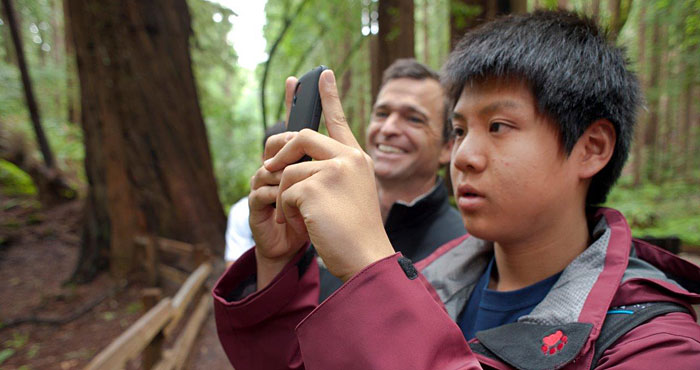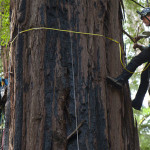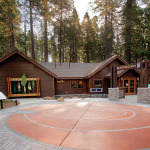
Teenager Risa Padilla lives in Oakland, California, in the shadow of Redwood Regional Park, home of the largest remaining natural stand of coast redwoods in the eastern San Francisco Bay Area. For Oakland’s 400,000 residents, the forest of 15-story redwoods offers nearby inspiration and access to the wild territory of golden eagles, rainbow trout and more. Thanks to your generous gifts, Padilla recently visited the park for the first time through the Save the Redwoods League Education Program. She smiled as she recalled her school trip. “The trees are so huge, it really makes you feel like a little ant. It’s a humbling experience,” she said. Like most of her Oakland Technical High School classmates, she had never experienced this local park’s beauty. Such detachment from nature is a trend among children nationwide. Of Americans ages 6 and older, only half participated in outdoor recreation in 2012, according to The Outdoor Foundation’s Outdoor Participation Report 2013, which is based on a scientific survey of 26,000 households. Half of humanity lives in cities, the United Nations (UN) shows. Eighty-two percent of the United States population lives in urban areas, and the UN projects continued urban growth.
Redwoods Strengthen Us
As a redwoods enthusiast, you likely have always known that spending time in nature makes you feel good. Well now you have proof: Studies consistently demonstrate that spending time in nature improves people’s mental and physical condition. So says an academic literature review by Deakin University and Parks Victoria in Australia. The review cites three studies showing that exposure to natural environments such as parks enhances the ability to cope with and recover from stress, illness and injury. Most urbanites can only experience nature by visiting parks, and most of them are unaware of parks and their potential health benefits, the review says. Making people healthier is a great reason for the League to connect more people with redwood parks. As a member of the League, you make it possible for young people to experience the wonder of the redwoods, enriching their lives and fostering the conservationists of tomorrow. Please renew your membership or join today to support programs like this one. Continue reading this story to learn about our new ways of connecting people with redwoods, and learn how else you’re making a difference.
Tags: 2014, Summer Bulletin


